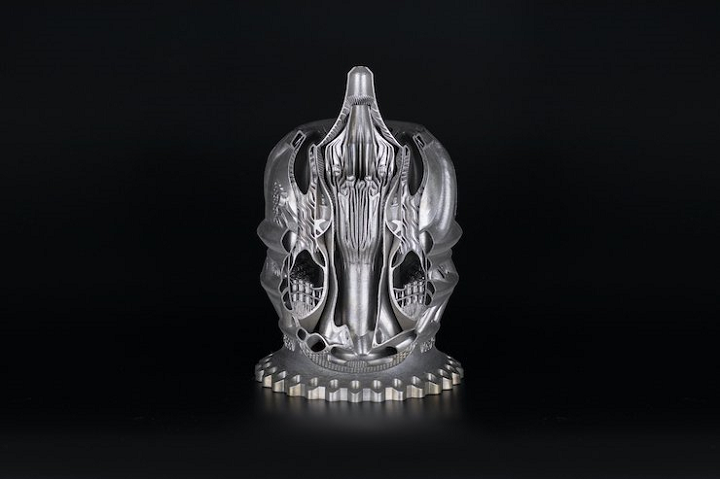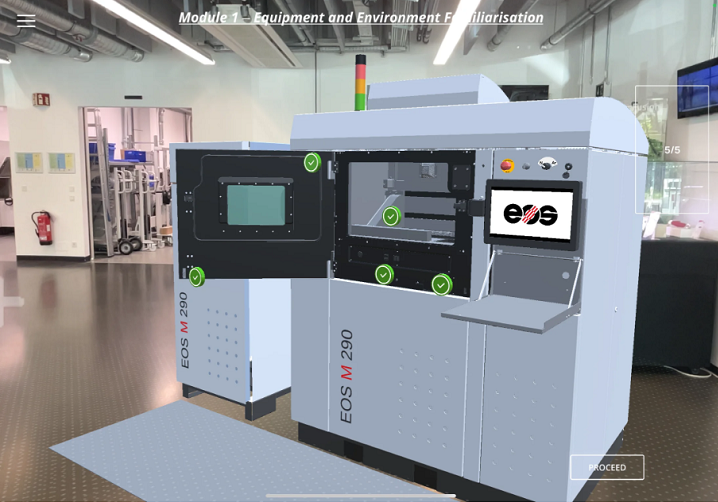In today’s 3D printing briefs, we start with business, as Meltio has named its latest service desk and SelfCAD has launched an affiliate program. Moving on, Hyperganic’s AI-powered algorithmic design software is now available to the public, and EOS has announced the availability of its Extended Reality Basic Training App for the M 290. Finally, a manufacturer has printed in 3D its own R/C tug!
Meltio appoints K3D as official European service bureau
Laser metal deposition technology manufacturer, Meltio, has announced the appointment of Dutch technology center K3D as the first official service bureau and main contributor to application development in Europe. Meltio’s official sales and distribution partner in the Benelux region, 3D Printer Solutions, helped secure this agreement, after K3D verified Meltio’s LMD wireframe technology with custom printing and acquired the plug and play system. play Meltio M450 and the integration of the Meltio Engine robot. Meltio’s LMD technology uses low-cost basic welding wire and stacks weld beads precisely on top of each other when introduced into a laser-generated weld pool; it also integrates very well with CNC and robotic equipment. K3D has a lot of experience developing applications for various customer-driven projects across multiple industries, and will be able to increase its metal additive manufacturing portfolio with Meltio’s technology, as well as meet demand. of Meltio parts in the industrial sectors.
“Over the years, we have become familiar with various metal 3D printing technologies, such as powder bed fusion. However, Meltio’s pioneering wire laser metal deposition process will definitely put metal AM in a new perspective and facilitate its adoption in the Dutch market,” said Luuk Wissink, CEO of K3D. “By acquiring the Meltio M450 metal 3D printer, we will be able to easily print very high density metal parts on a small footprint, while being able to meet the ever-increasing demand for larger and larger metal parts. complex using the integration of the Meltio Engine robot.
SelfCAD launches affiliate program for referrals

The SelfCAD 3D modeling program, which has an intuitive interface that allows users to easily create and modify 3D models, has launched an affiliate program, which is a great way for users to promote the product while earning extra money at the same time. Joining the program is free and anyone can join, whether you are an individual user or a website owner. SelfCAD affiliates will receive free access to SelfCAD Pro, 5% commission on all products for every paid subscription and a dedicated support team to help ensure your success as an affiliate.
To become a SelfCAD Affiliate you may need to have an account, which you can sign up for here. Then you can apply for the affiliate program and the SelfCAD team will contact you with further details within 3-7 business days. Once you have been approved, you will receive a unique URL which will allow you to access your affiliate dashboard. After onboarding, you will also receive program terms and conditions, as well as marketing materials for SelfCAD. If you know someone who would like to use SelfCAD, simply recommend them with your referral link and you will earn a commission if they subscribe to one of SelfCAD’s paid plans.
Hyperganic Announces Public Release of Core 3 Software

Last year, Hyperganic launched its Hyperganic Core 2.0 and Hyperganic Print Framework 2.0 platforms, based on a voxel-based geometry system for algorithmic and AI-driven 3D design. Today, the software startup announced the public release of Hyperganic Core 3, the third iteration of its AI-powered design software platform. According to founder and CEO Lin Kayser, the first iteration was an internal release, with the startup working with 3D printer manufacturers to enable direct output for multiple 3D printing methods. Over the past 18 months, while working on the second, seven-fold iteration, and due to high demand, Hyperganic Core 3 is only available as a gradual rollout for a few hundred users, although thousands more new users are waiting to use the platform.
Hyperganic Core is written largely in machine language, optimized for different process architectures, and the latest GPU techniques are used in the 3D voxel display. The software platform enables the development of algorithms capable of automatically creating highly functional parts, machines and structures. Since Hyperganic 2.0, the startup has used external coding interfaces, and many of its projects have thousands of lines of code, which Kayser says will soon be in the millions. The startup believes engineers can transform workflows into more sustainable and scalable processes by translating manual engineering processes into algorithms. Now that Hyperganic Core 3 is released, users will be able to share their code and translate their engineering work into algorithms, enabling monetization of the algorithms or 3D objects they create.
EOS M 290 xR basic training app available in store

The first AM machine basic training app for the EOS M 290
Speaking of availability, Additive Minds Academy, the EOS training provider for the AM industry, has announced that its first Extended Reality (xR) app for basic training with the EOS M 290 is now available in stores. The app allows new and existing employees to get trained much faster on EOS systems, from anywhere in the world, even before the printer is delivered. For example, an application specialist can use the xR application to learn the skills needed to advise stakeholders and customers, as well as operate EOS printers and software, which will help businesses save money. . The xR app provides an immersive augmented reality training experience, allowing trainees to familiarize themselves with key components and interact with a life-size model of the EOS M 290. The Extended Reality app for basic training with the EOS M 290 is now available for Apple and Android devices in the Additive Minds Academy store.
“Industrial 3D printing offers companies immense potential in the development of new applications. Especially for newcomers, it is important to quickly acquire know-how. EOS is committed to delivering the best learning experience – with cutting-edge learning methods that are engaging and fun to use, smart and available anytime, anywhere,” said Volker Kunze, Head of ‘Additive Minds Academy. “The app can reduce operator training to just two or three days, while decoupling training from on-site machine availability. Thus, a company can use the waiting time effectively by starting training before the new system arrives. »
Hackaday project: 3D printed tugboat

Finally, hacker Luis Marx lives on the shores of Lake Constance in southern Germany, and although he enjoyed the water, he was tired of paddling. Unfortunately, local regulations mean the use of outboard motors is restricted; what’s a manufacturer to do? ! Luckily, R/C model boats are allowed, so he got creative and built an R/C tugboat, using 3D printing and a hardcore lithium-ion battery, which could be used to move around Lake. Tugboats are fascinating because although they are quite small, they have extremely powerful engines inside their hulls, with a power-to-tonnage ratio ten times that of most commercial vessels, allowing them to push, push and pull gigantic freighters. through the narrow places of the port. So a smaller version of a tug should easily be able to move an adult male around a lake on his paddle board!
The tugboat design was inspired by the popular 3DBenchy standard reference print, and it took Marx about 30 hours to print the parts, which can be found on Thingiverse. Lots of epoxy resin has been used to make the whole thing waterproof, and the tug is powered by the lithium-ion battery, which drives two brushless DC racing drone motors; all together, that’s almost a full kilowatt of power. Unfortunately, it was so powerful that the little 3D printed boat couldn’t handle it and jumped out of the water when used. Marx solved this problem by setting the motor controller to about 50%, and it was definitely strong enough to move it on the paddle board. A custom handheld R/C controller uses WiFi to communicate with the ESP8266 inside the boat, and since the tug doesn’t have a rudder, halving a motor’s power makes it easier to control left- right. However, a fully charged battery only provides about 40 minutes of traction, so paddles might not be the worst idea.
Subscribe to our newsletter
Stay up to date on all the latest 3D printing industry news and receive information and offers from third-party vendors.
